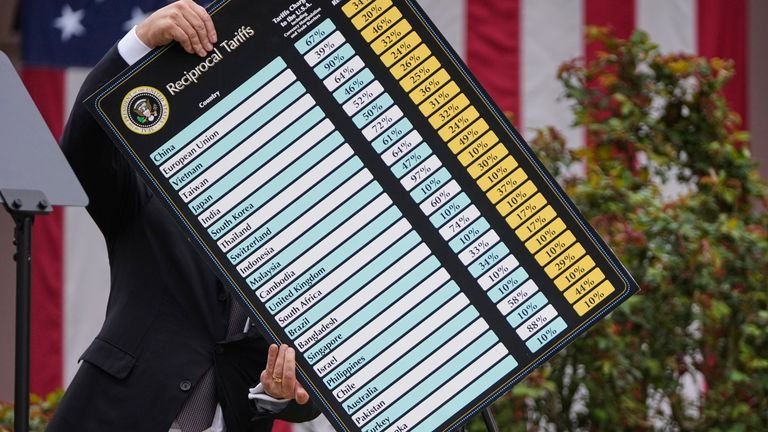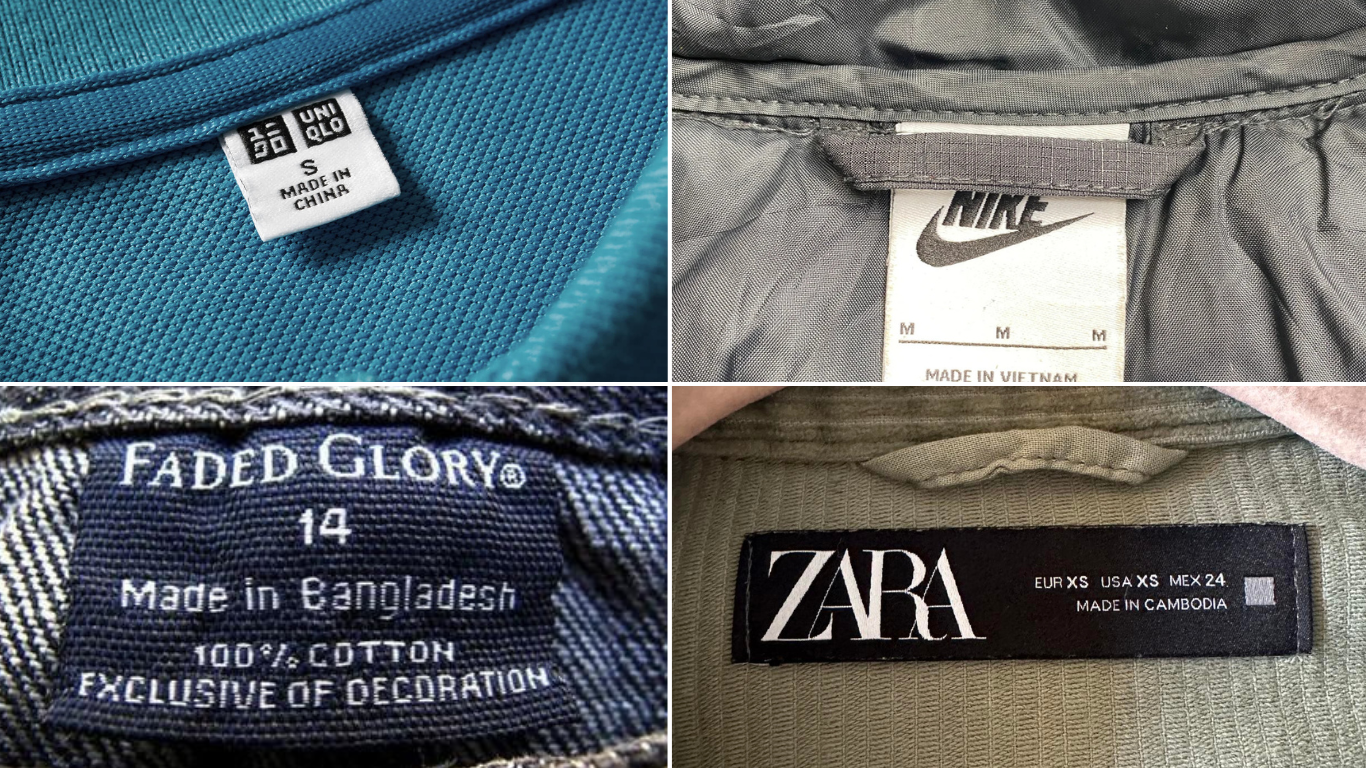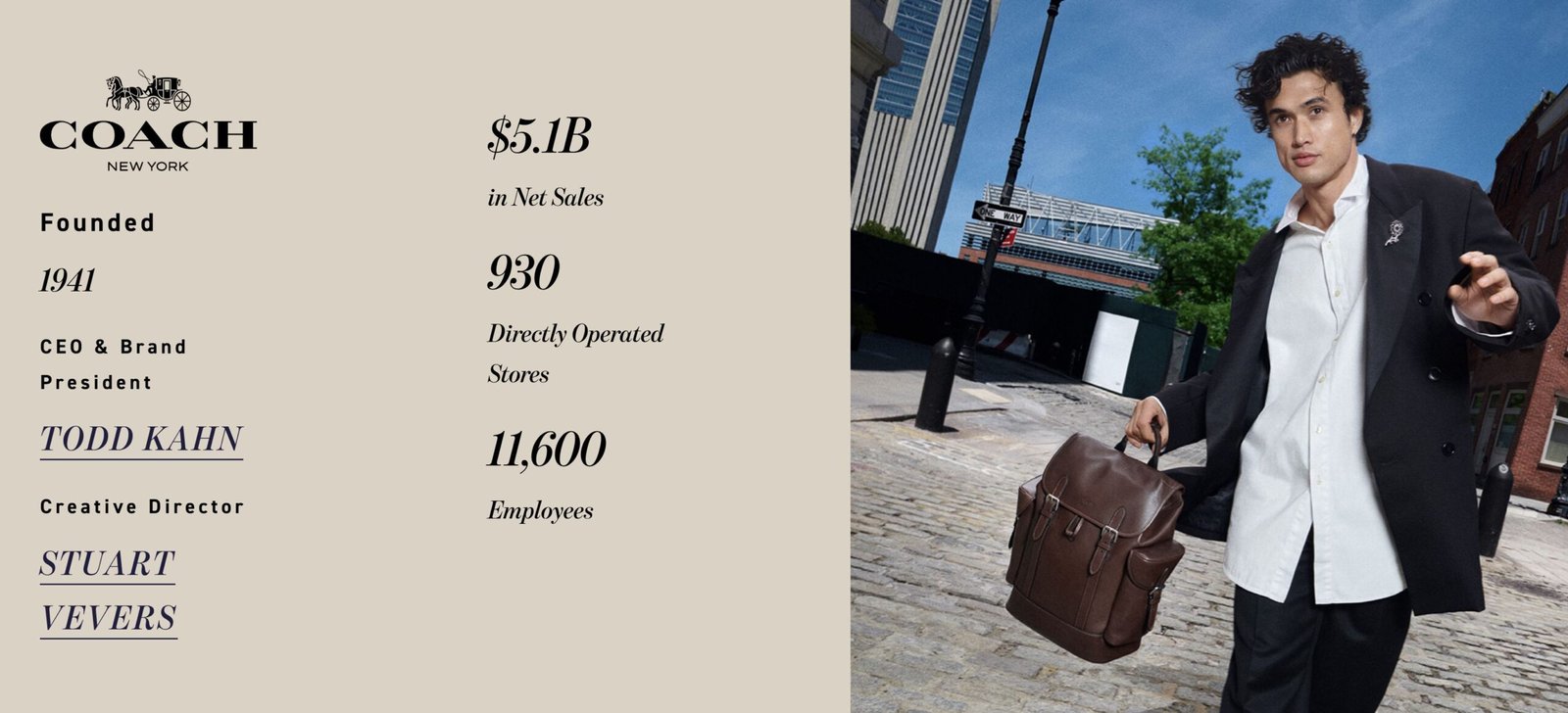Trump’s tariff tsunami has ripped through global trade winds, unleashing sweeping tariffs that are cutting through the carefully balanced supply chains the fashion industry has painstakingly optimized post-COVID disruptions. These punitive import duties: 46% on Vietnam, 49% on Cambodia, 37% on Bangladesh, and a crushing 54% on China, threatens to rock the very foundation of the global manufacturing landscape, leaving fashion brands, retailers, and consumers bracing for the inevitable storm.

Wall Street wasted no time showing its hand. In the hours after the tariff announcement, fashion stocks tumbled across the board. Lululemon dropped over 10%, Nike and Ralph Lauren dropped more than 7%. Coach’s parent company Tapestry lost 5.2%, Capri Holdings (Versace, Michael Kors, Jimmy Choo) fell 5.4%, and PVH Corp (Tommy Hilfiger, Calvin Klein) shed nearly 5%. For an industry already navigating shaky consumer confidence and rising production costs, the message was loud and clear: This is a disruption with weight. Brands have long relied on vast international supply chains, with Nike manufacturing over 50% of its footwear in Vietnam, On Running sourcing nearly 90% of its production there, and Gap and H&M relying heavily on Bangladesh, all now facing significantly higher tariffs.
These escalating import duties will inevitably translate to higher prices for consumers. In 2023 alone, the U.S. imported $79.3 billion worth of apparel, the vast majority of which was sourced from Asia. With over 98% of apparel and 99% of footwear sold in the U.S. being imported, nearly every product in the average wardrobe, from basics to luxury, will now carry a significantly higher price tag. Further amplifying this impact is the effective scrapping of the long-standing de minimis exemption.

For years, items under $800 could enter the U.S. tariff free, a loophole heavily utilized by ultra fast fashion giants like Shein and Temu, which shipped over 1 billion packages to the U.S. in 2023 alone. Now, no matter how small your online order, you’ll feel the tariff sting.
The illusion of domestic revival
While the rhetoric from Washington champions a patriotic revival of American manufacturing, optimism within fashion circles remains scarce. “Made in America” in fashion faces a stark reality check. Domestic production currently accounts for a mere 3% of all clothing sold in the U.S. Reviving an industry systematically dismantled over decades presents monumental hurdles: billions in long-term investment, substantial federal subsidies, and a skilled workforce that has largely vanished. The shuttered textile mills of the Carolinas, dye houses of California, and garment factories of New York’s Garment District are testaments to this lost infrastructure, which won’t be rebuilt overnight.
Moreover, the romantic notion of “Made in America” often ignores the intricate global web of fashion’s raw materials. While the U.S. remains a significant exporter of raw cotton (shipping approximately 2.78 million metric tons in 2023), it’s no longer the most cost-effective or logical choice for domestic fashion manufacturing, highlighting inherent economic inefficiencies. Crucially, fashion’s reliance extends far beyond cotton to a diverse range of materials like silk, wool, viscose, and other sustainable fabric mixes, many of which are not readily available within the U.S. This necessitates importing raw materials, a logistical and sustainability challenge that undermines the very premise of local production.
This contrasts sharply with overall U.S. manufacturing, a $2.3 trillion pillar contributing over 10% to the national GDP in 2023. Apparel manufacturing, however, represents only a tiny fraction of this. Unlike sectors like automotive, which once defined American industrial pride, fashion production never established the same deep foundational roots in the modern U.S. economy. The truth is, fashion is inherently global. Brands, even those touting domestic craftsmanship, rely on intricate international supply chains, sourcing everything from Egyptian cotton and Italian leather to Japanese zippers. And with Trump’s new tariffs, these essential imported materials, the very lifeblood of many “Made in America” aspirations, will also face significant price hikes.
The luxury market’s resilience will be tested by these tariffs, with mid-tier brands facing the greatest exposure
Even the typically resilient luxury market now finds itself navigating unprecedented territory. While giants like LVMH and Hermès, with their substantial profit margins, might weather this tariff storm, their reliance on global sourcing means they won’t be entirely unscathed. However, the real pressure cooker is for mid-tier luxury brands, those aspirational labels catering to the upwardly mobile and status-conscious shopper. These consumers, accustomed to dropping $500 on sneakers, might seriously reconsider when that price tag jumps to $700. Brands like Tory Burch, Kate Spade, and Rag & Bone are caught in a precarious position: their price points leave little room for discounting, yet they are significantly exposed to these tariff-induced cost increases. Ultimately, luxury isn’t just about exclusivity; it’s about the perceived value and experience. When tariffs simply inflate prices without enhancing quality or brand cachet, it risks transforming prestige into mere inflation, as seen in the example of a Louis Vuitton bag suddenly costing 15% more for the same product.

Perhaps the future of fashion manufacturing isn’t solely within the United States; but in the broader context of the Americas.
Latin America, particularly Mexico, presents a compelling alternative. Historically known for artisanal manufacturing, Mexico has the potential to scale into industrial production. Proximity to the U.S., existing trade frameworks like USMCA, and growing infrastructure could position Latin America as the next frontier for nearshoring fashion manufacturing. Countries like Colombia and Peru could also play crucial roles in a developing regional supply chain.
Though “Made in America” for the masses faces significant hurdles, niche opportunities offer a glimmer of hope. High-end, artisanal, and bespoke fashion can thrive, as can specialized sectors like technical textiles. Small-batch, direct-to-consumer brands focused on local production might also find their footing. Looking ahead, advancements in automation and sustainable materials could unlock new possibilities, albeit gradually.
The bigger question that looms is the willingness and ability of nations within the Americas to truly collaborate and invest in building this new manufacturing ecosystem, especially given past trade tensions. How easy will it be to cultivate a robust industry from the ground up? And, crucially, how stable can this industry be when policies can shift so dramatically with each new administration? While ‘Made in America’ remains a resonant slogan, for now it comes with a luxury-sized price tag and a path paved more with politics than possibility.




